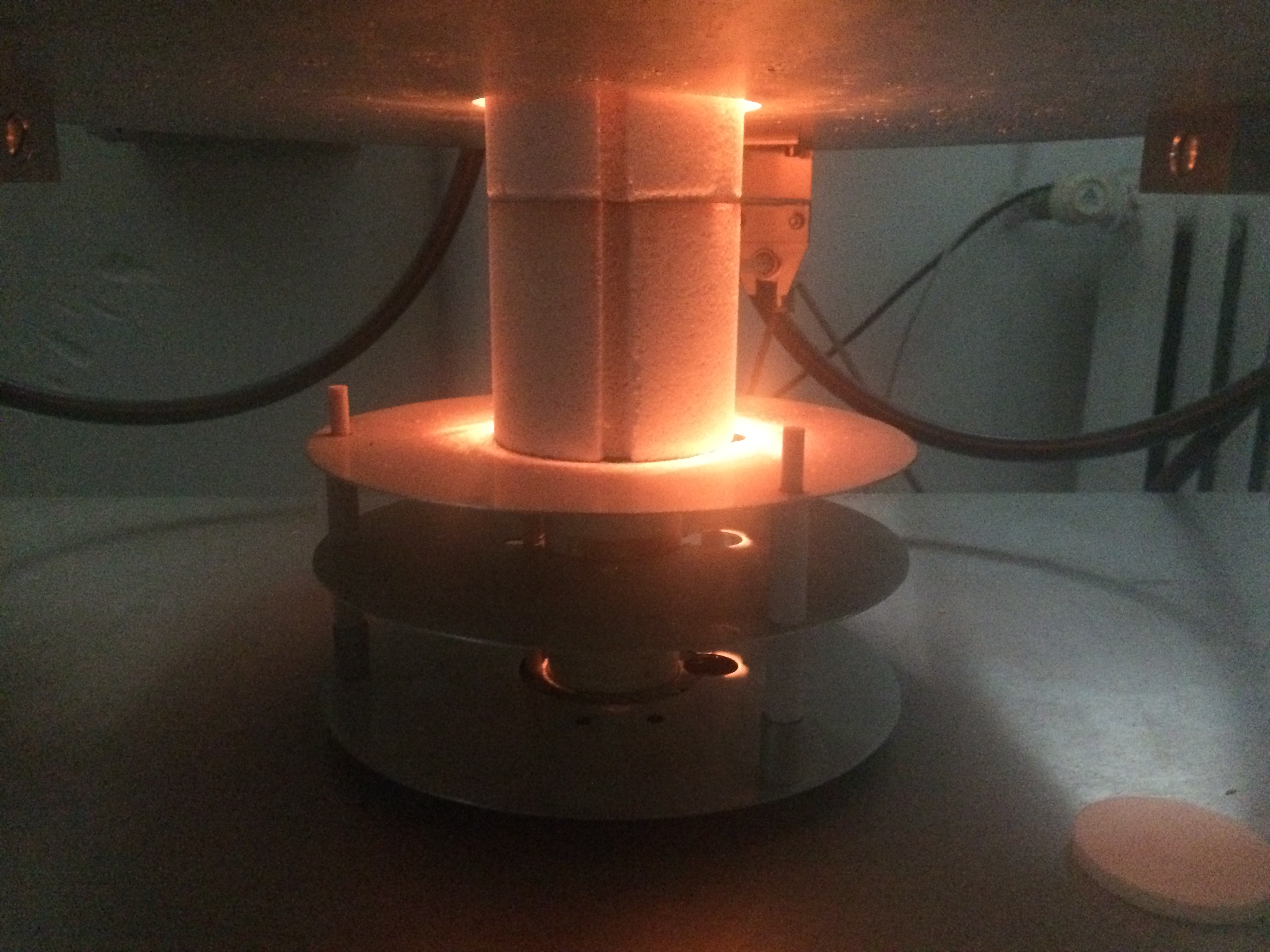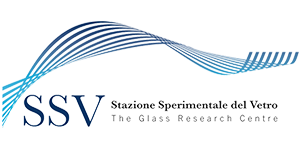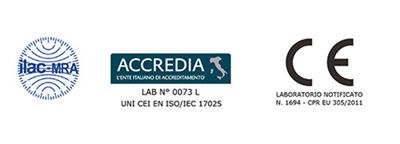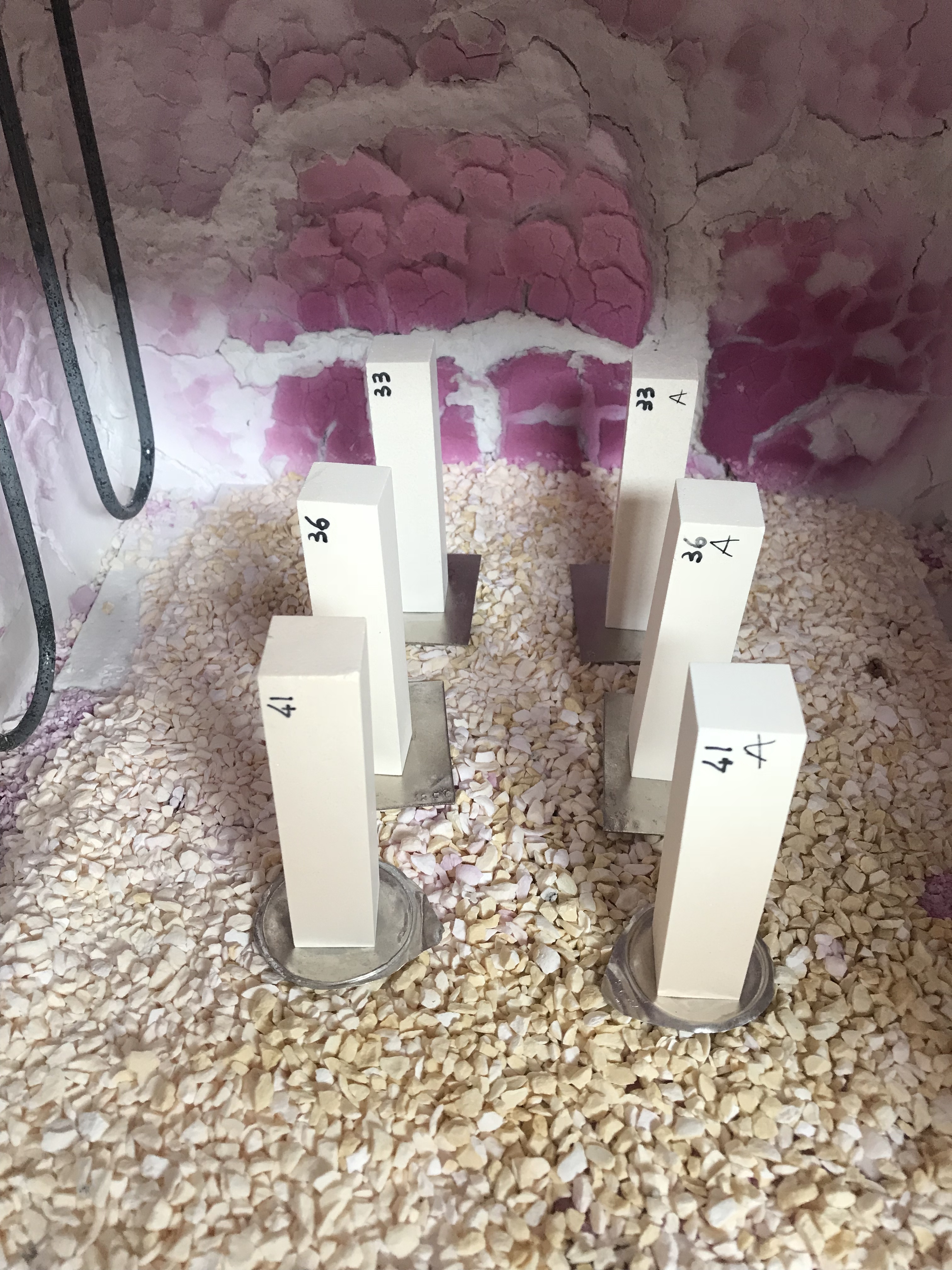 The determination of the thermophysical properties of refractory materials is essential for the evaluation of their performance level and of their suitability for their different applications.
The determination of the thermophysical properties of refractory materials is essential for the evaluation of their performance level and of their suitability for their different applications.
SSV laboratories are equipped with state-of-the-art instrumentation for the measurement of the main thermophysical properties of interest for the different types of refractory materials intended for use in various sectors of industrial application: glass, steel, aluminum, cement, ceramic, petrochemical, etc.
The evaluation of the refractoriness under load of a material consists in the measurement of the deformation (expansion or contraction) of a sample of standard size and shape as a function of its temperature, while under a constant stress of axial compression. The instruments available in SSV allow RUL tests to be carried out both according to the main international standards (ISO 1893, UNI EN 993-8), and to customized parameters, tailored according to the customer’s needs; in case of special requirements, it is also possible to control the composition of the test atmosphere (oxidizing or inert).
Following an extensive test period on silica bricks for coke oven, we have acquired a solid competence to carry out tests according to DIN 1089 – Refractories for Use in Coke Ovens.
The measurement of the creep (or fluage) in compression of a material consists in the determination of the deformation (expansion or contraction) of a sample of standard size and shape as a function of test time (usually in multiples of 25h), while subjected to a constant axial stress of compression at a constant temperature. The instruments available in SSV allow to carry out the CIC tests up to 1700°C, either following the relevant international standards (ASTM C832, ISO 3187, UNI EN 993-9), or custom parameters tailored according to the specific needs, also controlling the test atmosphere (oxidizing or inert).
Following several extensive test campaigns on silica bricks for coke plants, SSV has also acquired a solid competence to carry out tests according to DIN 1089 – Refractories for Use in Coke Ovens.
The determination of linear thermal expansion coefficients (LTE) and of the thermal expansion curve of a refractory material is of great importance in assessing its dimensional behaviour during the heating up (or cooling down) phase, and therefore is fundamental for the correct design of expansion joints and tolerances. In particular, it is particularly critical when in the material there are phases that undergo crystallographic transformations accompanied by sudden changes in volume, as in the case of the zirconium oxide present in AZS fused-cast refractories (melting tank and superstructure) or in silica bricks (crown). The measurement is made by subjecting a sample of standard shape and size to a slow and progressive heating, determining the resulting deformation (expansion or contraction) as a function of temperature under conditions of absence of axial load.
The resistance to bending stress at high temperature is a property of extreme importance for load-bearing elements made of refractory material, such as lintels, ceramic rollers, plates for continuous casting of steel, etc. In fact, when these are subjected to a flexural load under high temperature conditions, they exhibit different mechanical performances compared to room temperature ones, due to various possible phenomena such as the formation of new binding or reinforcing phases, softening of the matrix, grain boundary creep, recrystallization, oxidation or decomposition, etc.
The Hot MOR of samples is determined with special instrumentation according to the methods detailed in ISO 5013, UNI EN 993-7 and ASTM C583.
The determination of the permanent variation of the linear dimensions of a sample of dense refractory material is made by measuring its dimensions before and after a heat treatment at a given temperature. The thermal cycle (up to a maximum of 1700°C) and the firing atmosphere (oxidizing or inert), as well as the shape and size of the sample can be tailored according to the specific test requirements of the customer, or can follow the standards ASTM C113 or UNI 993-10. In the case of insulating refractory materials, it is also possible to carry out a volumetric variation test (Reheat Change) according to ASTM C210.
To evaluate the chemical resistance of a refractory material to the aggressive environment (fumes, vapours, fluids, etc.) with which it will be in contact during service life, it is possible to carry out a series of tests either bespoke or regulated by international standards. Depending on the requirements, specimens of the appropriate shape and size can be subjected to the attack of alkaline vapours, acid or basic slag, carbon monoxide, molten metals, etc., under controlled temperature and atmosphere conditions (Tmax = 1700°C; oxidizing, inert or CO atmosphere).
Some types of refractory products must exhibit excellent properties of resistance to thermal shock. This property can be measured in SSV following specific cyclic procedures, both standard and customized, which generally involve an isothermal phase at a given temperature, followed by controlled cooling in various media, such as compressed air (single or multi nozzle) or water (e.g. UNI EN 993-11).
Thermal conductivity is a very important parameter for various types of refractories, and is particularly crucial for insulating products. Its determination can be carried out in SSV with different measurement techniques depending on the type of material: for homogeneous products (e.g. technical ceramics) the “laser flash” technique can be used, while for other refractory materials the calorimeter method (ASTM C201) or the hot wire method (ISO 8894-1) are generally used.
In addition, by combining the measurement of thermal conductivity with sample density and specific heat measurements, it is also possible to obtain an estimate of the thermal diffusivity of the material.
Electrical resistivity is a property of interest in the case of refractories used in the construction of structures in which electrode heating systems operate, such as electric furnaces for melting glass. In these cases, in fact, in order to concentrate the flow of current in the melt as much as possible, and thus minimise dispersion in the structure of the furnace, it is important for the resistivity of the refractories to be orders of magnitude greater than that of molten glass. The measurement can be made in a temperature range of up to 1650°C, and for alternating currents with frequencies ranging from 50Hz to 1MHz.
Fusedcast AZS
For AZS fused-cast refractories, typically used in the construction of glass furnaces’ melting tanks and superstructures, or for the checker-packs of their regenerators, Stazione Sperimentale del Vetro offers a complete range of services of thermophysical characterization, based on ISO, ASTM, CEN, etc standards, or on technical procedures developed by the ICG technical committee “TC11: Refractories for glass melting furnaces”.
In addition, SSV is capable of providing its assistance to customers in testing specimens’ sampling operations, in order to ensure maximum significance and representativeness to the experimental results obtained from laboratory tests.
The evaluation of the exudation potential of AZS refractories is important in estimating the level of defects (e.g. cords, stones, etc.) that they are likely to produce in the glass bath, especially in the initial period of service life of the melting furnace. The glassy phase naturally contained in the AZS refractories tends to be partially and progressively exuded, i.e. expelled outside the blocks, towards the hot face. This amorphous material, rich in Al2O3 and ZrO2, flowing down from the superstructure or being directly removed from the blocks of palisade and bottom by the melt, can give rise to major defects in the finished products.
Laboratory tests can be carried out following standard procedures such as ASTM C1223 (2 heating and cooling cycles), or other technical specifications such as those developed within ICG by the Technical Committee 11 (10 heating and cooling cycles).
The resistance of AZS fused-cast blocks to corrosion and erosion by molten glass can be assessed by means of high temperature tests under both static and dynamic conditions.
In static tests, small bars of standard shape and size are immersed in a glass melt contained in a platinum crucible at high temperature, and left there in static conditions for a specified time. The test is comparative, and allows the performance of 2, 4 or 6 samples to be determined at the same time.
In the dynamic tests, the rods immersed into the melt can be rotated in two configurations:
- single cylindrical sample rotating around its vertical axis at speeds of the order of 15 rpm;
- 4 or 6 cylindrical samples mounted on a carousel, in revolution at speeds of the order of 3 – 6 rpm.
In both cases, the level of corrosion after testing is quantified as the variation of the residual section of the specimens from the initial dimensions, measured at the glass level line (“metal line”), i.e. the region of maximum corrosion.
The test duration and temperature, the speed of rotation of the test system and the composition of the glass bath can be adapted to the specific needs of the customer.
The measurement of the propensity of glass contact refractory materials to give rise to gas bubbles in the melt (known as “blistering”) is of crucial importance especially for distribution channels (feeders), where any bubbles nucleated within the glass have less time to be reabsorbed in the melt, or to reach the surface and be released into the atmosphere.
To evaluate the blistering tendency of a refractory, SSV carries out specific tests following a test method defined by the ICG Technical Committee TC11. On the basis of the experimental results, a qualitative performance index is obtained: an excellent material develops less than 10 bubbles/g glass (index = 1), while a poor material can release more than 1500 bubbles/g glass (index = 4).


